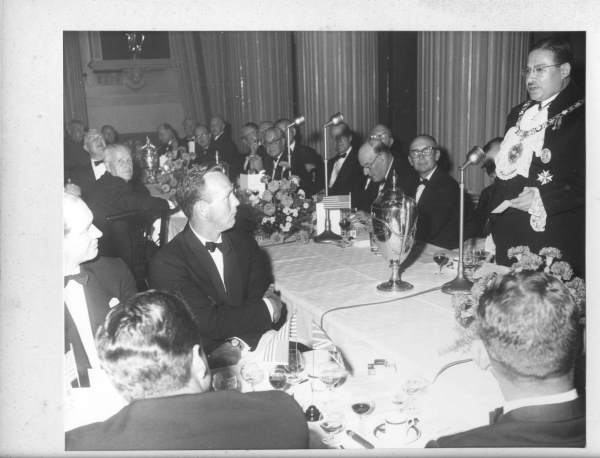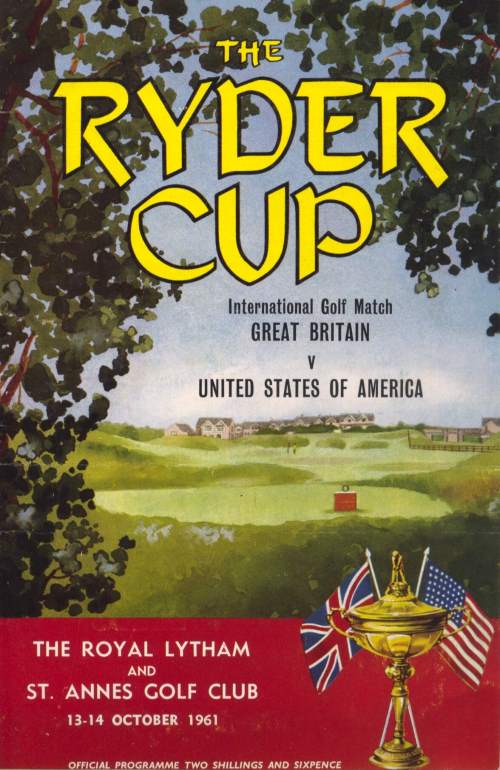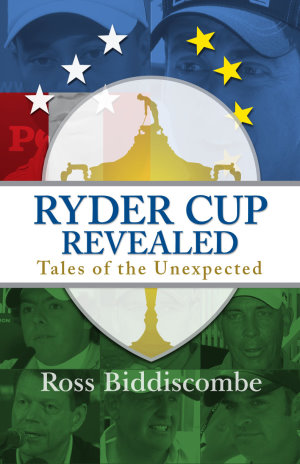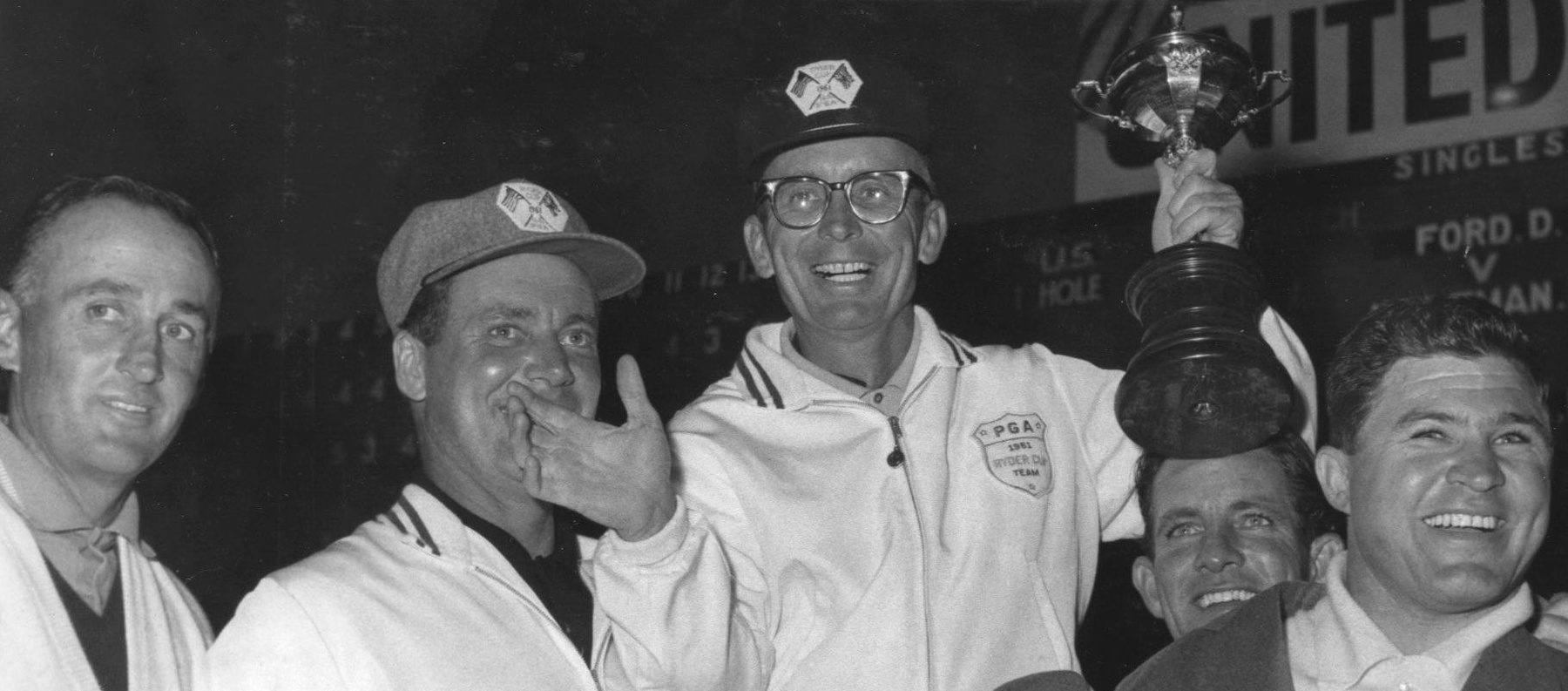
When fans walk through the entrance at Le Golf National this year, the sophistication of the operation in Paris is due to the event’s huge commercial success. The official partners pour in money, as do the hospitality packages, not to mention the 50,000 paying golf patrons. Yet, when you look back at the history of the matches, this influx of money was slow to start
Immediately after World War II and following three Ryder Cups in the UK, the PGA hopped around the country to whichever golf club or interested partner would offer an upfront payment and underwrite any loss. So, for example with the PGA’s Ryder Cup balance sheet showing a paltry £176 in the black, the 1949 match went to Ganton Golf Club in Yorkshire after Scarborough Corporation offered a £5,000 guarantee.
Four year later, with Britain still subject to post-war rationing, Wentworth Golf Club – the venue of the second unofficial match 30 years earlier – stepped into the breach with London’s wealthy Surrey stockbrokers opening their wallets.
It was the 1957 contest, at Lindrick Golf Club near Sheffield in South Yorkshire, that saw the UK matches turn the commercial corner. Local steel magnate Sir Stuart Goodwin became the PGA’s first real Ryder Cup benefactor since the man who gave his name to the event.
A proud and generous Yorkshireman, Goodwin had already decided to put his birthplace of Sheffield on the golfing map. From 1952-54 he spent £15,000 on the Sir Stuart Goodwin Foursomes tournament and then wrote a cheque for £10,000 to the PGA to bring the 1957 Ryder Cup match to Lindrick. Goodwin also made sure that the fans paid a decent price for a world class event – a six-day ticket for all the practice and match days cost £2, easily the most ever paid to watch a Ryder Cup event up until then.
An unexpected victory under captain Dai Rees cemented the idea that the GB team needed financial support to bring success. The honour of staging the Cup paid off all round because GB’s victory was their first in two decades and Lindrick became famous on both sides of the Atlantic. Prior to its Ryder Cup hosting, this unassuming course had only been famous because its 5th green straddled three different counties – Yorkshire, Derbyshire and Nottinghamshire.
 Four years later, however, the PGA could not find another Sir Stuart Goodwin and so a new strategy was implemented: it was time to work in partnership with some Open Championship venues that had commercial as well as staging expertise.
Four years later, however, the PGA could not find another Sir Stuart Goodwin and so a new strategy was implemented: it was time to work in partnership with some Open Championship venues that had commercial as well as staging expertise.
The next five hosts of the British Ryder Cups would be Royal Lytham & St Annes in Lancashire (1961 and 1977), nearby Royal Birkdale (1965 and 1969) and the Honourable Company of Edinburgh Golfers at Muirfield in Scotland in 1973.
The 1961 match at Lytham inadvertently became an even more effective choice because it was staged just three months after American maestro, Arnold Palmer, had won the Open Championship at Birkdale. At the Ryder Cup, attendance was high as Lancashire’s version of ‘Arnie’s Army’ gazed open-mouthed at their new hero’s aggressive shot-making for the second time in three months.
It was the Royal Birkdale match in 1969 that showed the potential commercial future for the Ryder Cup. Brian Park, PGA vice-president and former captain of Royal Birkdale, was at the helm for this match and he brought a new level of professionalism to everything outside the ropes. Park, a canny businessman who worked closely with sponsors like the Senior Service cigarette brand, produced a hefty programme for the first time and built a tented village for the fans.
Although Park was not involved on the Cup committee in 1969 when the match returned to Royal Birkdale, the blueprint had been established four years earlier and more fans, sponsors and money were attracted to the event. But even though the Match was now generating six figure budget numbers and everyone, from players to spectators to commercial supporters, was getting a better deal, the costs of staging the event were also increasing. Thus, there was still a shortfall in the PGA’s Ryder Cup fund when the next team went to America.
The Muirfield contest in 1973 witnessed the emergence of the first corporate sponsor in the Cup’s history – Sun Alliance – while the match was back at Lytham in 1977, the year of both the Queen’s Silver Jubilee and the Ryder Cup’s Golden Jubilee.
But still there was not sufficient profit for the PGA’s liking. Team GB&I (as they had become known) turned into Team Europe in time for the next “home” match at Walton Heath in 1981, but just when this change spread hope that the contests would become closer, there were huge commercial disappointments.
The original plan for the 1981 match was for the teams to lock horns on a different course – the infant golf resort in the West Midlands, The Belfry – but in February 1981, just seven months before the due date, the contest was switched to Walton Heath. The Belfry was just not ready.
Although Walton Heath is a great course, neither the Surrey club nor the PGA had enough time to properly organise an international tournament on this scale. When both teams turned up on the first morning wearing dark blue sweaters and looking interchangeable, it was a sign that the 1981 match would hit a low in terms of the Cup’s on-course and off-course achievements. In the end, both the PGA and the club did wonders just to stage an event worthy of Samuel Ryder’s name, although the US team showed no sympathy.
 Perhaps the strongest-ever team assembled to this day trounced Europe 18½-9½ for their 11th Ryder Cup victory in a row. To make matters worse, huge amounts of rain deterred many spectators and washed away the income targets. Some estimates put the match’s deficit at £50,000. To add insult to injury, Sun Alliance walked away as sponsors shortly afterwards and that seemed like the last straw for the Cup’s commercial potential. Luckily, help was on the way, back in the West Midlands.
Perhaps the strongest-ever team assembled to this day trounced Europe 18½-9½ for their 11th Ryder Cup victory in a row. To make matters worse, huge amounts of rain deterred many spectators and washed away the income targets. Some estimates put the match’s deficit at £50,000. To add insult to injury, Sun Alliance walked away as sponsors shortly afterwards and that seemed like the last straw for the Cup’s commercial potential. Luckily, help was on the way, back in the West Midlands.
Pictured top: Celebration time for Jerry Barber and his US teammates in 1961
to be continued….
Ross Biddiscombe’s acclaimed book Ryder Cup Revealed is available at amazon.co.uk via this hotlink: https://tinyurl.com/y9w75whd

